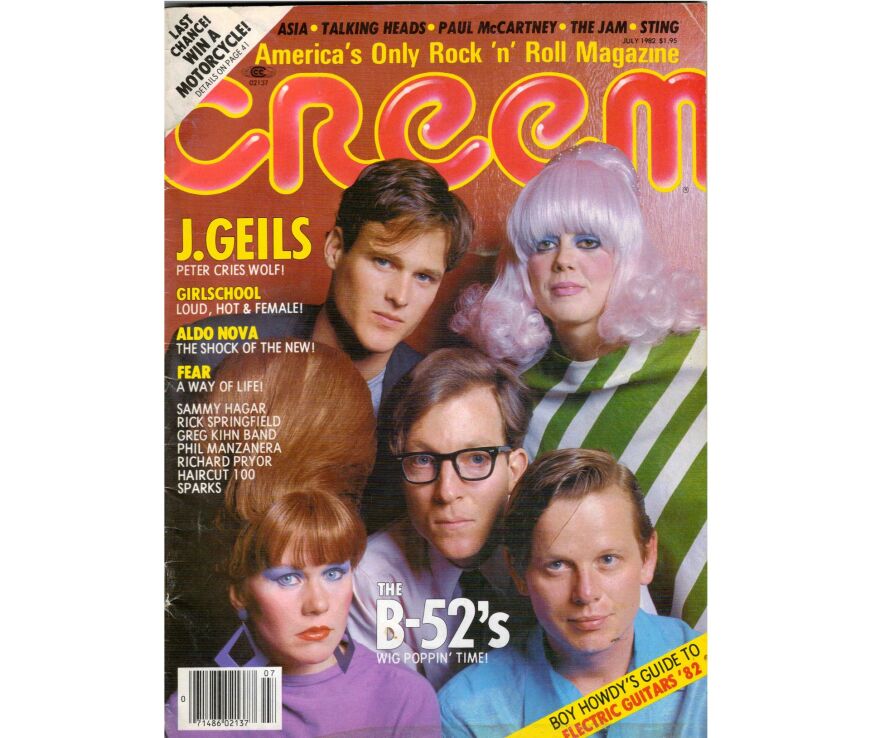There's no way you can look back at the history of rock and roll, and rock journalism, without looking at CREEM.
The late Barry Kramer started distributing CREEM out of the trunk of his car in 1969. In its heyday, CREEM made its home in Birmingham in Oakland County.
It was irreverent, profane and often brilliant. And many huge names in music can thank CREEM for putting them in the spotlight early in their careers.
The magazine started at Wayne State University, then Walled Lake. Leslie Pielack, director of The Birmingham Historical Museum and author of a piece on CREEM for Michigan History Magazine, calls CREEM's time in Birmingham "its golden years."
And Susan Whitall was there for them.
"I was just a Michigan State grad trying to get a job and I had no idea I would look into this," she says of her start.
Whitall was living with her parents in Birmingham when she happened upon a copy of CREEM at the local bookstore. She went to purchase it only to find that the address given was in Birmingham, and directly above the store.
Having studied English Whitall said, "I did love rock, I had been to see The Beatles when I was only 10 years old, but I also had this literary thing on the other side,” and CREEM was a perfect match.
After writing to the editor she starting working for the magazine. Her first interview was with Peter Frampton.
Whitall describes the magazine as often garish with an in-your-face mentality. The cover boasted "America's Only Rock 'n' Roll Magazine," a dig at Rolling Stone.
One of CREEM's most influential editors was Lester Bangs, famously portrayed by Philip Seymour Hoffman in Almost Famous. He was opinionated, and fired by Rolling Stone for being disrespectful.
But Whitall says Bangs was respected by artists.
While he would tell CREEM staff, "Rock stars are not your friends. They are not our friends,” Whitall says she would come to the office and find Ian Hunter of Mott the Hoople sleeping on the sofa, waiting for Lester.
Even when Lester would criticize artist's work, Whitall says, "They loved him. Even liked it when he cut them down. And when CREEM criticized them, most of the guys, most of the groups, thought it was funny. They enjoyed it, it was part of the game."
For some, Detroit may not seem like the best choice for the headquarters of a rock and roll magazine, but Pielack says the music scene was part of what attracted Bangs to the area.
"For those of us who grew up here, that was normal to us. We thought every town had that kind of music scene," Whitall says.
Groups like MC5, The Stooges and Grand Funk Railroad called Michigan home.
CREEM's eventual decline came in the 1980s. With MTV, less record company advertising and the passing of both Lester Bangs and Barry Kramers, the magazine came to an end.
Pielack describes the magazine as a mass of energy full of contradictory opinions and personalities. And Barry Kramer had been the person to try to keep it together.
"Every individual was trying to do their own thing. And I think that that was part of the beauty and the magic, and also part of what made it difficult to sustain," Pielack says.
The Birmingham Historical Museum recently received a large gift of CREEM material. An exhibit featured a recreation of a workspace that would have been found in the office.
Pielack was surprised by the enthusiasm of younger visitors.
"Teenagers reading CREEM magazine and becoming so absorbed you would think you were back in the 70s."
The amount of support and interest they received showed Pielack that there's a continued, and even growing interest in the magazine's history.
Whitall says, "It really gave kids an idea. Here are these crazy young people much like themselves in this little tiny office in Birmingham and look what they did. It didn't stop them that they were in a suburb. It didn't stop them that they were in Detroit."
The exhibit is no longer on display, but Pielack is working to share archival content online and through a traveling exhibit.
--Katrina Shafer, Michigan Radio Newsroom






